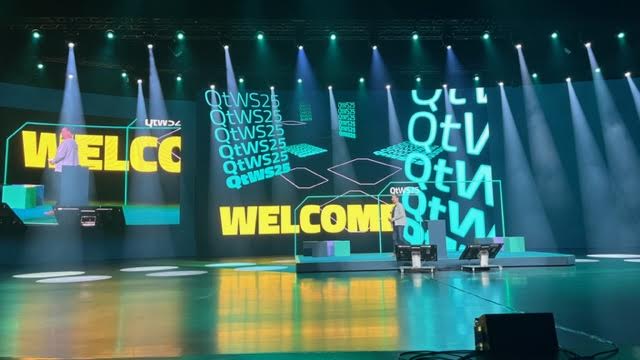“Nobody else is doing it this way” - How Qt is on its way to a fully technology-agnostic platform
Qt reveals significant expansion to its ecosystem

You might not realize it, but most of us are using Qt-powered products every day, with the development tools behind anything from electric toothbrushes, to coffee machines, and even medical devices.
In the company's 30 years of operating, it has delivered design and development tools to over a billion devices and consumers, and at its recent Qt World Summit 2025, it announced an expansion to its ecosystem that could see this get a lot easier.
Qt has now announced it is expanding its platform and ecosystem, extending its front/back-end separation, letting Qt Quick operate independently of C++ back-ends, helping give developers greater flexibility to quickly build unique devices and apps without any negative impact on functionality.
Building bridges
This means programming languages like Python, .Net, Rust, and Swift - as well as Kotlin/Java will be integrated. Even if product development teams are using different core technologies, they can now work in parallel for feature building.
“Years ago, there was a need to create technology that would allow companies to build applications that are modern, fluid, animated, very nice looking, but also which can go from a small screen to big screen and it can scale,” Qt’s SVP or product, Juhapekka Niemi, explained.
“But it was always tied to Qt,” he tells us. “So we're trying to make sure that this powerful technology, you can use it even though you don't have C++ framework like you have with Qt.”
This means, for example, a developer can use Rust as the back-end, and QML as the front end, and bring these together thanks to Qt Bridges, forming a minimal application.
Sign up to the TechRadar Pro newsletter to get all the top news, opinion, features and guidance your business needs to succeed!
“We want to create or bring the power of Qt to these other applications. If you want to, for example, do 3D on an Android application, we can do that today. Or if you want to use Qt Graph on some other languages, do data visualization. We are really making QML as a horizontal technology.”
Figma to Qt
To go alongside this, the World Summit also saw a free standalone Figma to Qt plug-in introduced. This is a browser-based plugin, so developers can stay in Figma whilst converting their designs into QML applications.
This is a brand-new design-to-code solution, enabling the “direct export of Figma designs into any IDE, generating clean and production-ready QML code.”
“Launch the plugin, preview your UI live in the browser. Make a change in Figma and see it reflected in real time,” explains Niemi. “What you see is what you'll build.”
“Need code? Switch to Codeview. Explore clean, structured QML generated directly from your design, ready to integrate into your application.”
A horizontal technology
Niemi explains this is a very powerful technology, and that combined with Figma to Qt, as well as the Qt AI system, Qt is bringing an agile and robust solution to developers outside of the Qt ecosystem.
Just like pretty much everyone else, Qt is also continuing with AI investments. By expanding functionalities with new support for LLMs using Sonnet, VClaude 3.7, and DeepSeek v3, Qt hopes to help free up time for developers to get back to what they really enjoy - meaningful coding.
These tools are designed to take the more mundane tasks off developer’s hands, like code documentations, explanations, test case writing, and boilerplate QML code.
All of these new features combined hope to bring a seamless experience to application building and software development, turbo-charging groundbreaking tech inventions - cementing Qt’s place as a titan of software application development and underpinning the digital development of today.
“Great power comes great responsibility, as the saying goes,” he warns. “The software you're building today will just not shape the digital world, it will shape the world we live in. So one question still lingers. What will you build next?”
You might also like

Ellen has been writing for almost four years, with a focus on post-COVID policy whilst studying for BA Politics and International Relations at the University of Cardiff, followed by an MA in Political Communication. Before joining TechRadar Pro as a Junior Writer, she worked for Future Publishing’s MVC content team, working with merchants and retailers to upload content.
You must confirm your public display name before commenting
Please logout and then login again, you will then be prompted to enter your display name.